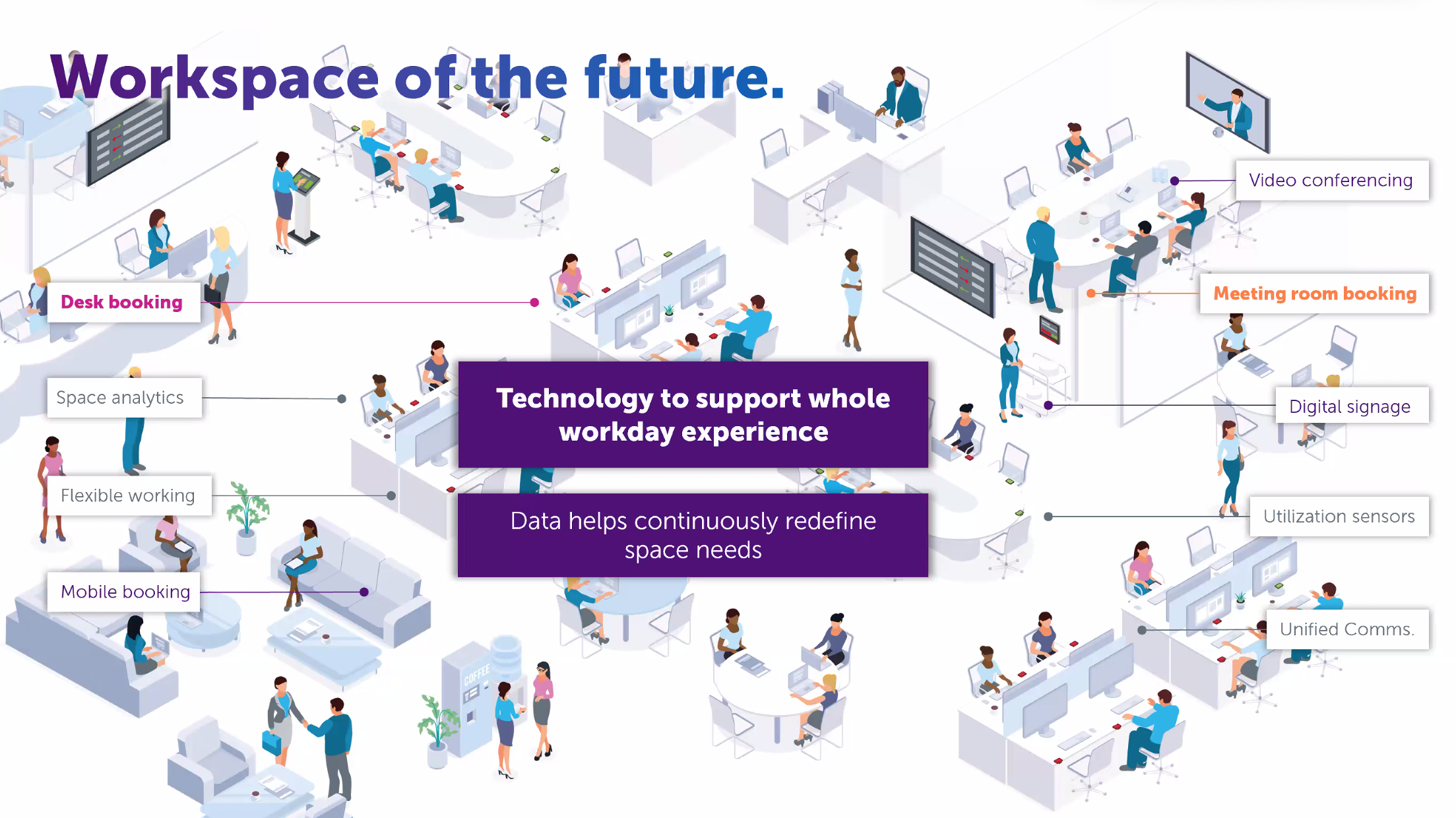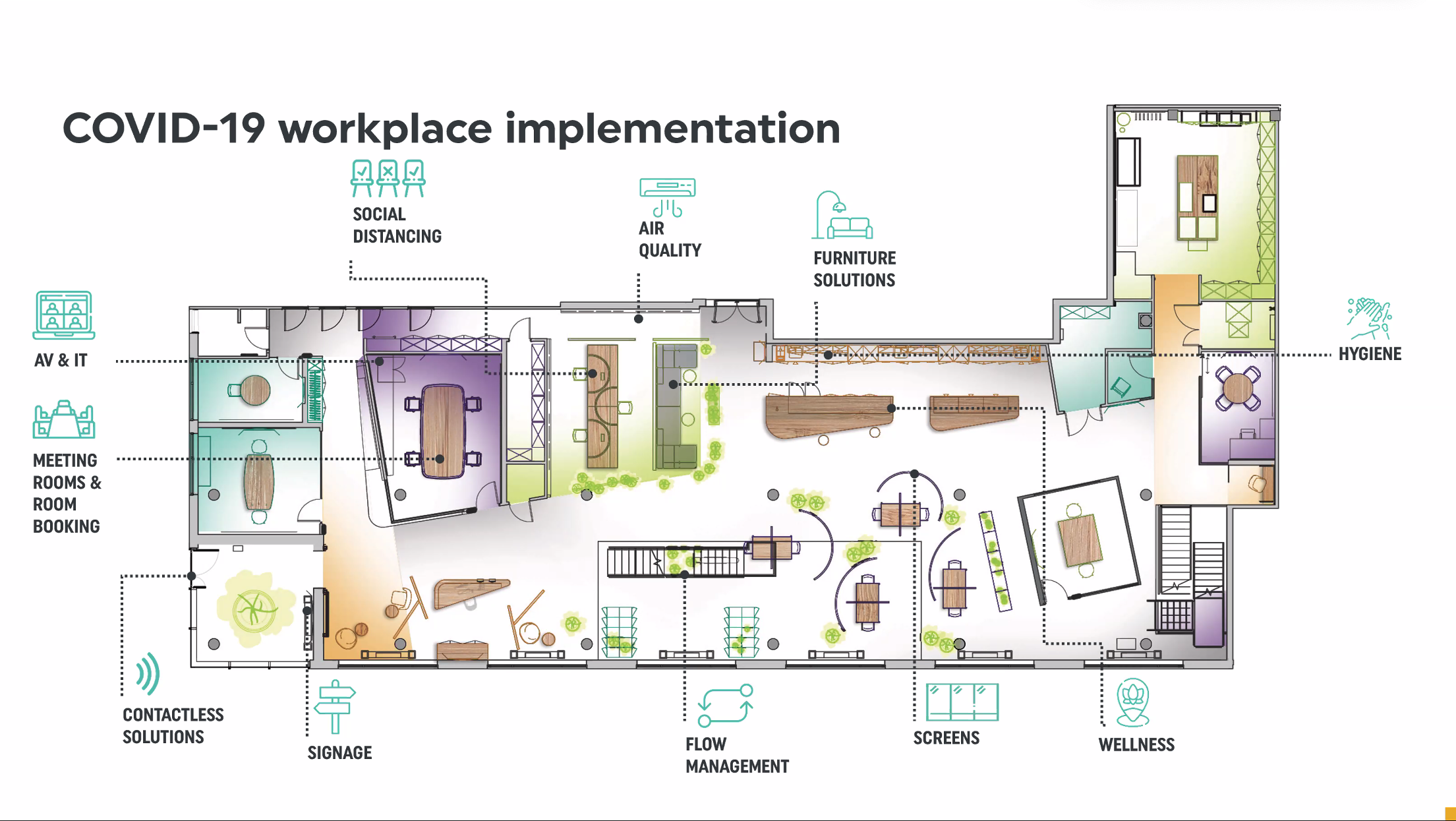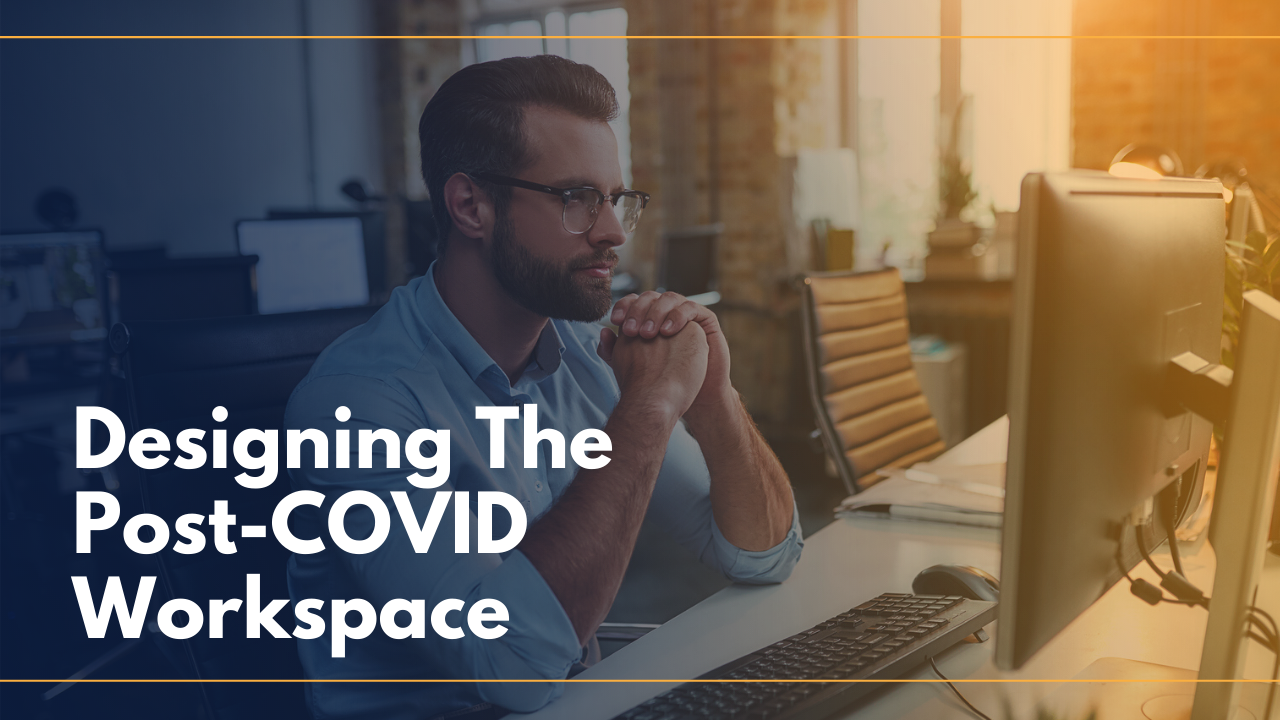- Condeco and workspace design firm, Oktra, shared insights on the future workplace.
- People, wellness and experience is at the heart of post-COVID workspace design.
- People have proven they can work productively from home, so the office must change and become more people-focused in order to draw workers back.
The pandemic is accelerating many workplace trends that were already emerging, and while there has been a significant focus on wellness in recent years, the necessity to create workspaces that foster health and wellbeing has, in the past few months, become paramount.
“Now is the time to embed wellbeing into every aspect of design and delivery of work itself”
Erica Volini, Deloitte Consulting LLP
The pandemic is causing devastation on many levels. But it is also creating positive change, including greater focus on people and wellness in the workplace.
During a webinar on post-COVID workplace design hosted by Condeco, Simon Cohen, Partner Director UK MEA, said: “There is opportunity in change as we reevaluate and realign the way we use our space. We’re seeing an acceleration in new ways of working which have jumped forward 10 years in the space of 2 to 3 months.”
Ultimately, these changes have the potential to support a better employee experience and to improve organisational culture by placing people at the heart of new workspace design.
So what do these new places of work look like?
Consider these different stages of workplace requirements:
- In the past, workspaces utilised fixed desks and a mindset that people must come to the office to do their work. The office wasn’t just a place, it was work itself.
- Today, many offices are sitting empty due to the exodus caused by the pandemic. Yet people are continuing to work productively at home. This negates the need to go to the office on a rigid 9-5 schedule and is also creating a new level of trust between management and staff.
- In the second half of 2020, as offices gradually re-open, limited numbers of staff will come back. Cohen referenced a SpaceLab study that found 47% of people are happier working at home than they were in the office. Therefore we’re unlikely to see a flood of people heading back to the office. It will be a slow, phased return.
- In the future, we will likely see a hybrid approach of both remote and in-office working. Nobody knows how long the pandemic will last or when a vaccine will be widely available, so for now, companies are planning on low occupancy with continued spacing and long-term remote work strategies for those who want it.
People Need a Reason to Come to the Office
Currently, even while offices are reopening, the choice to come back to work is placed on the individual. People need to feel confident to come back to the workplace and until they do, they will remain at home.
Condeco’s head office will reopen in August but according to Cohen, the decision to come back is entirely in the hands of their staff. There is no requirement to come back until they feel safe and confident; this also includes feeling safe commuting on public transport.
Therefore, those people who can work productively at home need a valid reason to come to the office.

People will come back to the office for social interaction, collaboration, and to be productive. The onus is on workplace operators to create an environment in which this can happen safely.
“Offices have shrunk over the years, but we’re now expecting a reversal of that as we’re not comfortable sitting close together as we once did,” noted Cohen. “Despite government guidelines, we need to feel comfortable working in the office. This means we need more circulation space, more space between desks, and ultimately less occupancy per square foot.”
This is now placing more emphasis on the user experience, wellness, and comfort.
While flexible space operators have long focused on these core elements, it is only now that the world is waking up to the absolute necessity for a workspace that’s focused on the health and wellbeing of its users.
The Role of Technology
Of course, technology has a huge role to play in creating safe, wellness-focused workspaces in the current and post-COVID era.
Temporary measures such as digital signage will help people navigate their way around the space safely. These signs can be updated easily as government guidelines change.
Longer term, data capture will enable HR managers and workspace operators to track occupancy and manage overcrowding. Workers may also need to pre-register their desk or space ahead of time.

Therefore the new workspace will be:
- Driven by data insights
- Be flexible and adaptable
- Enabled by technology
- Have efficient use of space
- Fit the employee’s workday
- Enable collaboration
- Foster productivity
- Embrace company culture and community
“The employee is at the centre of this journey,” added Cohen. “The space we use needs to be designed from a tech and flex perspective to enable more collaboration in and between offices.”
What Does the New Space Look Like?
According to Claire Elliott and Monika Passey from workspace design firm, Oktra, the key to redesigning office space for the post-COVID era lies in asking questions, listening to your people, and implementing feedback in a considered way.

Elliott noted that the old approach to office design involved having everyone in the same place. “Now, priorities and work styles are being reevaluated. Work life balance is back in the spotlight.”
Passey added to this by drawing on a staff sentiment survey in which almost 70% of Oktra respondents aired concerns about contracting the virus either in the workplace or commuting on public transport.
Therefore, change is no longer optional. Workspaces must adapt in order to accommodate people safely.
“Form a response team, not just in management but across the business,” Passey advised. This way, you can collect feedback and real experiences from a cross-section of your workforce. “Collect data and communicate constantly. This keeps everyone motivated and maintains trust, as people know that they will be taken care of.”
What is the Point of the Office?
Given what we know now, why should people return to the office at all? If people are productive and happy at home, should we continue working remotely?
It’s about balance, choice, and flexibility.
76% of Oktra’s staff said they want the office for collaboration in person. Social interaction is important, not only for personal and mental health but also to experience the culture of the company.
Elliott added, “Humans need humans.”
We know that people don’t want to rush back to the office. But we do need a place to collaborate in-person.

Therefore, a future hybrid approach will give people a comfortable balance of working close to home while also having the option to go to a place of work where they can spend time with others and work productively.
Coming back to Cohen’s earlier remarks, wellbeing will be embedded into the workplace — not just regarding safety and protection from COVID-19, but to create an environment that people want to use and a workplace experience that people value.
Without it, people will simply stay at home where they feel safe.
Therefore, Elliott noted that we will likely see more wellness elements such as cycle racks, showers, biophilia, and fitness equipment or classes. Again, these trends have long been in the making. Now, the pandemic has given wellness the push it needed to take precedence in the workplace.
“Our advice is to keep it simple, ask questions and use the feedback that is given to you,” added Elliott. “Your people are informing your future workspace. It’s all about people right now.”
Watch the full webinar recording here. Oktra has also published a guide to help workspace operators welcome occupiers back safely.


 Dr. Gleb Tsipursky – The Office Whisperer
Dr. Gleb Tsipursky – The Office Whisperer Nirit Cohen – WorkFutures
Nirit Cohen – WorkFutures Angela Howard – Culture Expert
Angela Howard – Culture Expert Drew Jones – Design & Innovation
Drew Jones – Design & Innovation Jonathan Price – CRE & Flex Expert
Jonathan Price – CRE & Flex Expert














